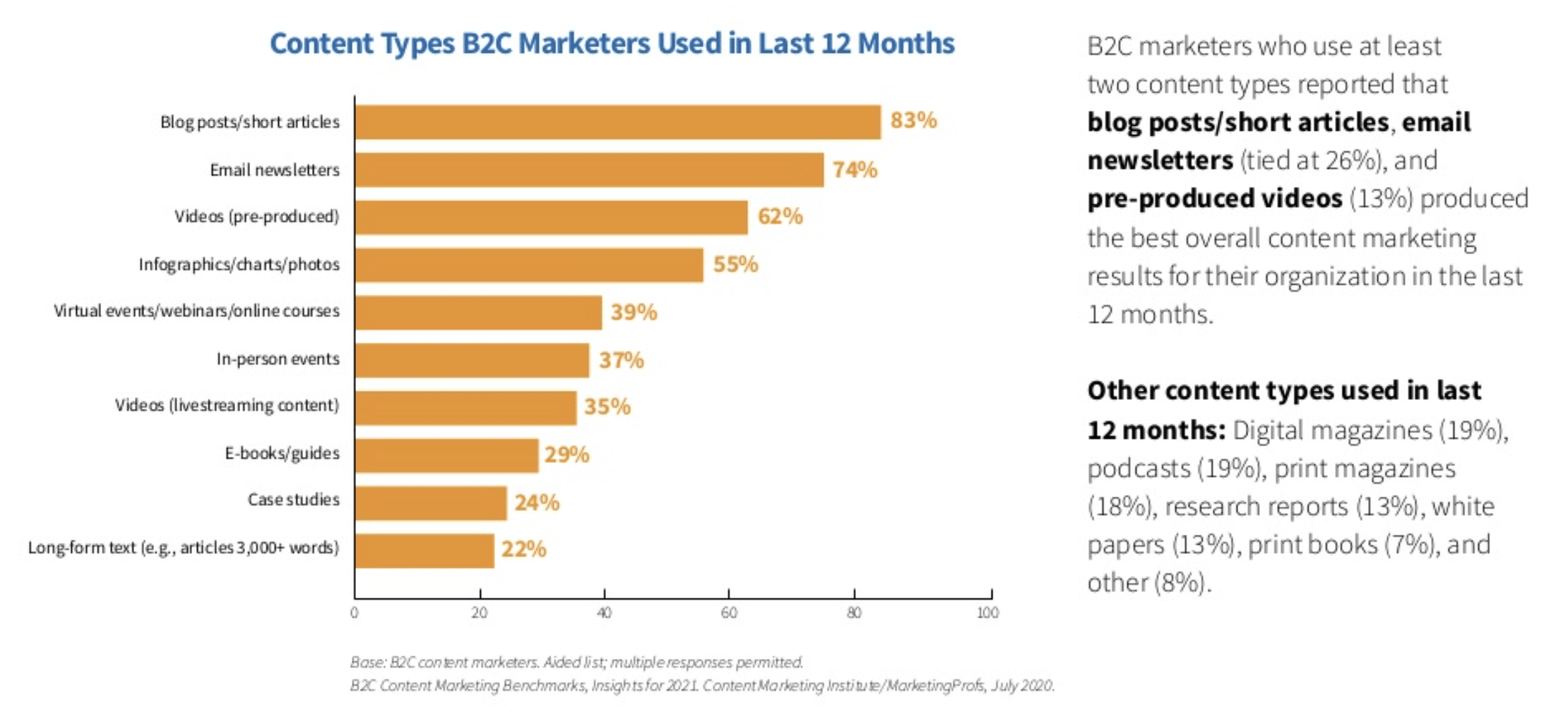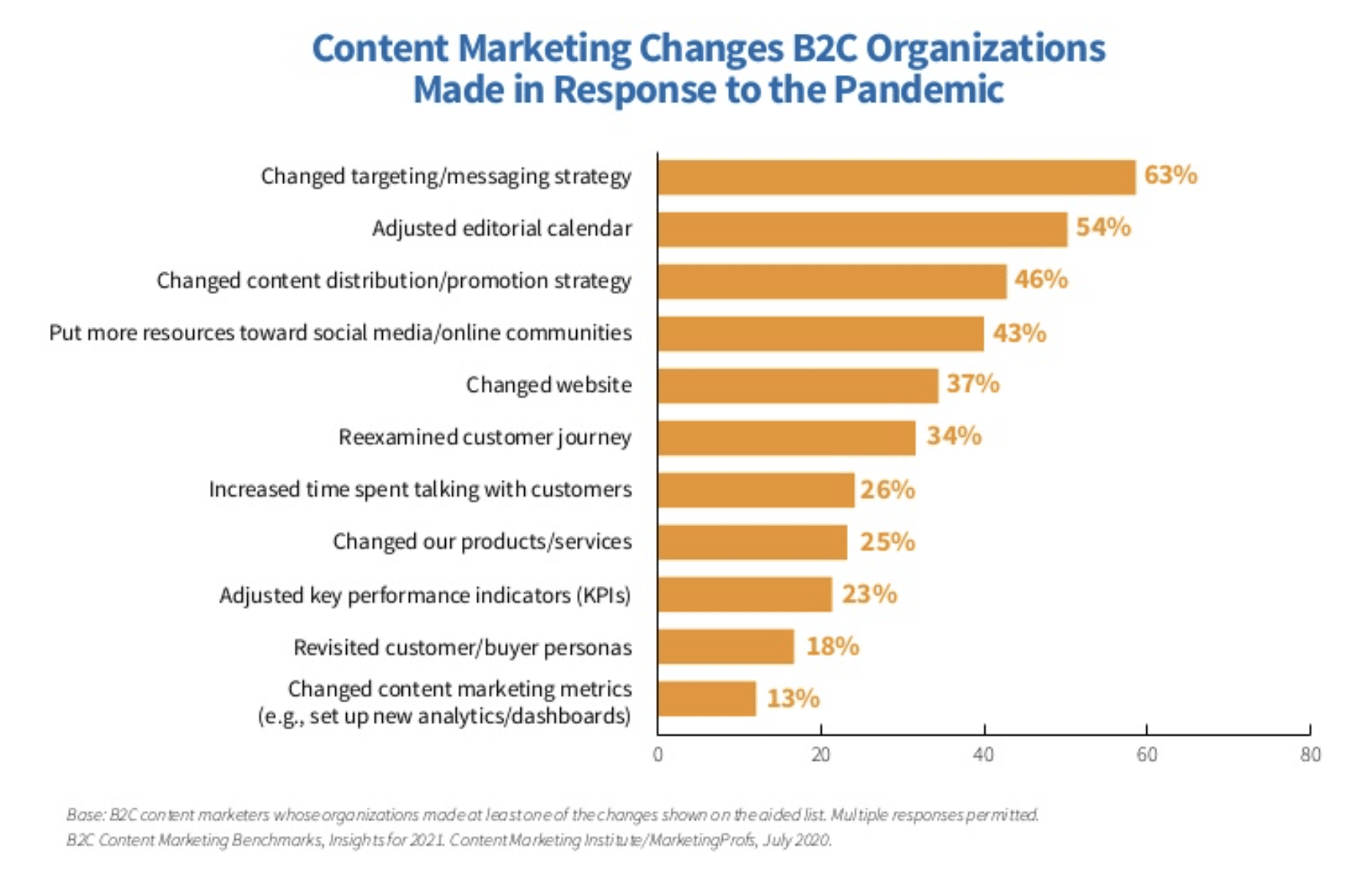
“How do I balance content creation across multiple target audiences?”
A marketer at Reynolds Brands asked this question, one of the Top 100 Questions on Content Marketing.
To balance content creation as you address multiple audiences, apply 4 principles:
- Invest in proportion to expected future profits to maximize growth.
- Include all your stakeholders who expect communications.
- Research buyer personas to get insights.
- Map your content to the buyers’ journey to deliver what buyers need when they need it, where they need it. Particularly since the journey may be changing during and after the pandemic.
1. Invest in proportion to expected profits to maximize growth.
Many marketing budgets start by funding new brands and new product launches. That makes sense when the new brands are expected to generate a significant part of the company’s future profits.
But even when growth slows, it still needs oxygen – marketing and content.
Strike the right balance. Allocate enough to keep harvesting the core businesses or mature brands while freeing up enough funding for the most promising growth products.
2. Include all your stakeholders who expect communications.
Of course, you’ll focus on prospects and buyers. But don’t overlook the needs of your sales and distribution channels – distributors, resellers, agents, dealers and retailers.
Create a message map to give your channels good answers to their questions: what’s in it for them (WIIFM)? Plus reasons to believe you.
Always keep employees informed and enthused about what’s ahead. Attention plus samples of new products will make employees true believers.
Most employees don’t know what to say to customers, Gallup found. Make sure your brand has employees who are trained to be brand ambassadors and ready to tell your story.
3. Research buyer personas to get insights.
To market effectively, you need to see what buyers are doing behind the scenes as they reach decisions on your brand and competitors’ brands. The most effective, quickest way to get a handle on buyers’ behaviors is buyer persona research.
Buyer persona research gives you insights into what buyers do offstage, addressing 5 specific questions about buyers:
- What triggers the buyers’ need? Marketers can set triggers that help buyers to recognize their unmet needs.
- Why buyers start a buying journey? Marketers can magnify the problem that buyers are working to solve.
- Which options they evaluate? Marketers can see through customers’ eyes what are the plusses and minuses in a competitive set.
- Which information sources buyers use? Marketers need to know where buyers go to seek content, answers to questions, and advice.
- What social proof buyers need to reach a decision and buy? To build buyers’ conviction to buy, marketers generate rankings, ratings, reviews, testimonials, social media and other forms of social proof.
Another thing buyer persona research reveals is who all is involved in the buying process. It’s not always obvious, when it goes beyond the person who made the purchase.
4. Map your content to the buyers’ journey.
Buyer persona research unlocks the insights you need to map content to the buyers’ journey.
With these insights, you confidently choose the media that buyers use. You can create content on topics buyers care about, and offer answers to real buyer questions at each step in the journey.
As a result of the pandemic, many buyers are using different types of content compared with what they did before. Which content and media matter the most to consumers right now?
Findings from the Content Marketing Institute (CMI) 2021 research show that consumer marketers are primarily focusing on blogs and short articles, email newsletters, videos and infographics.

In light of the pandemic, many content marketers are refreshing their playbooks.

Almost 2 out of 3 marketers changed their targeting and message strategies.
More than half adjusted their editorial calendars. Nearly half changed their distribution and promotion strategies.
As consumers pivoted to remote versus in-store buying, marketers added more social media and online communities. One out of three marketers changed their websites and re-examined the customer (buyer) journey:
To balance content creation as you address multiple audiences, use these 4 principles:
- Invest in proportion to expected future profits to maximize growth.
- Include all your stakeholders who expect communications.
- Research buyer personas to get insights.
- Map your content to the buyers’ journey to deliver what buyers need when they need it, where they need it. Particularly since it may be changing during the pandemic.

“How do I balance content creation across multiple target audiences?” is one of the Top 100 Questions on Content Marketing. Here are the answers.
Related Posts
Top 100 Content Marketing Question: How do we successfully integrate content throughout the marketing department and functions?
Find the right sponsor It takes time, space and resources to successfully integrate content into a marketing department. Since content marketing may take years...
Top 100 Content Marketing Question: How to value the impact of content marketing and justify the expense/overhead?
Get the whole team aboard To demonstrate the impact of content marketing, start by getting your executives and internal clients aboard the content marketing...
4 ways to help you escape marketing project approval hell
Your assignment: get a project through your company’s approval process. It usually feels like an uphill battle to win approval for a marketing project....
Free Guide: Fast-Forward Your Content Marketing
Take 7 strategic steps to put your content in the fast lane! In dozens of workshops over the past year, marketers have asked me...





